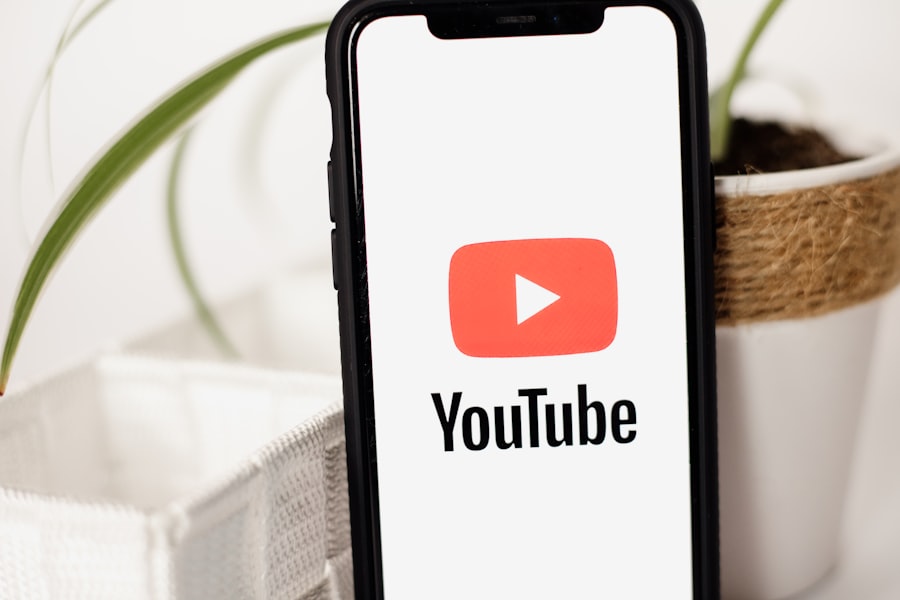
Influencer marketing has emerged as a powerful tool in the digital marketing landscape, transforming the way brands connect with their audiences. As I delve into this phenomenon, I realize that it revolves around leveraging the influence of individuals who have established credibility and a loyal following within specific niches. These influencers can range from celebrities to micro-influencers, each possessing the ability to sway consumer opinions and behaviors.
The essence of influencer marketing lies in its authenticity; consumers are more likely to trust recommendations from individuals they admire rather than traditional advertisements. This shift in consumer behavior has prompted brands to rethink their marketing strategies, placing greater emphasis on building genuine connections through influencers. As I explore the intricacies of influencer marketing, I recognize that it is not merely about collaboration but about storytelling.
Influencers have the unique ability to weave narratives that resonate with their followers, making products and services feel more relatable and desirable. This storytelling aspect is crucial, as it allows brands to tap into the emotional connections that consumers have with influencers. By aligning with the right influencers, brands can create campaigns that not only promote their products but also foster a sense of community and engagement among their target audience.
Understanding this dynamic is essential for any brand looking to navigate the ever-evolving landscape of digital marketing.
Key Takeaways
- Influencer marketing involves collaborating with individuals who have a strong online presence and a dedicated following to promote your brand or products.
- When identifying the right influencers for your brand, consider factors such as relevance to your industry, engagement with their audience, and authenticity.
- A successful influencer marketing strategy involves setting clear goals, establishing a budget, and creating a mutually beneficial partnership with influencers.
- Building relationships with influencers requires open communication, transparency, and a genuine interest in their content and audience.
- Crafting authentic and engaging content with influencers involves aligning their personal brand with your brand’s values and creating content that resonates with their audience.
Identifying the Right Influencers for Your Brand
Research and Analysis
I thoroughly research various social media platforms, analyzing engagement rates, follower demographics, and content styles to pinpoint influencers who can authentically represent my brand.
It’s essential for me to choose influencers who have a genuine connection with their followers, as this authenticity translates into trust.
This targeted approach helps to build trust with my audience and increases the likelihood of a successful campaign.
Informing Informed Decisions
By taking the time to thoroughly research and evaluate potential influencers, I can make informed decisions that will ultimately benefit my brand’s reputation and visibility. This careful approach ensures that I’m partnering with influencers who can effectively promote my brand and drive meaningful results.
Creating a Successful Influencer Marketing Strategy

Crafting a successful influencer marketing strategy requires careful planning and execution. I start by setting clear objectives for what I want to achieve through my campaign. Whether it’s increasing brand awareness, driving sales, or enhancing customer engagement, having specific goals helps me measure success later on.
Once my objectives are defined, I outline the key performance indicators (KPIs) that will guide my efforts. These KPIs may include metrics such as reach, engagement rates, and conversion rates, which provide valuable insights into the effectiveness of my campaign. Next, I focus on developing a creative brief that outlines the campaign’s vision, messaging, and deliverables.
This brief serves as a roadmap for both myself and the influencers I collaborate with, ensuring that we are aligned in our goals and expectations. I also encourage influencers to infuse their unique style into the content they create, as this authenticity resonates more with their audience. By fostering an environment of collaboration and creativity, I can create a campaign that not only meets my objectives but also captivates the audience in a meaningful way.
Building Relationships with Influencers
Building strong relationships with influencers is paramount to the long-term success of my influencer marketing efforts. I understand that these partnerships should extend beyond a single campaign; nurturing ongoing relationships can lead to more authentic collaborations in the future. To achieve this, I prioritize open communication and transparency with influencers.
I make it a point to engage with them regularly, whether through direct messages or comments on their posts, showing genuine interest in their work and opinions. Additionally, I strive to create a mutually beneficial partnership by offering value beyond monetary compensation. This could involve providing influencers with exclusive access to new products, inviting them to events, or featuring them on my brand’s platforms.
By recognizing their contributions and celebrating their successes, I foster a sense of loyalty and commitment that can enhance our collaborative efforts. Ultimately, building these relationships is about creating a community where both my brand and the influencer can thrive together.
Crafting Authentic and Engaging Content
When it comes to influencer marketing, crafting authentic and engaging content is crucial for capturing the attention of the audience. I believe that the key lies in allowing influencers to express their creativity while staying true to my brand’s message. This balance ensures that the content feels organic rather than forced or overly promotional.
I often collaborate closely with influencers during the content creation process, providing them with guidelines while encouraging them to infuse their personality into the final product. Moreover, I recognize the importance of storytelling in creating engaging content. Influencers have a unique ability to share personal experiences related to my products or services, making them more relatable to their followers.
By encouraging influencers to share their genuine thoughts and feelings about my brand, I can create a narrative that resonates deeply with consumers. This authenticity not only enhances engagement but also fosters trust between my brand and its audience.
Measuring the Success of Your Influencer Marketing Campaign

Measuring the success of my influencer marketing campaign is essential for understanding its impact and effectiveness. To do this, I rely on a combination of quantitative and qualitative metrics that align with my initial objectives. For instance, if my goal was to increase brand awareness, I would analyze metrics such as reach and impressions across various platforms.
On the other hand, if driving sales was a priority, tracking conversion rates through unique discount codes or affiliate links becomes crucial. In addition to these metrics, I also pay attention to audience sentiment and engagement levels. Analyzing comments and feedback from followers can provide valuable insights into how well the campaign resonated with them.
By gathering this data, I can assess what worked well and what could be improved for future campaigns. This iterative process allows me to refine my influencer marketing strategy continuously, ensuring that each campaign builds upon the successes of its predecessors.
Avoiding Common Pitfalls in Influencer Marketing
As I navigate the world of influencer marketing, I am acutely aware of common pitfalls that can derail even the most well-planned campaigns. One major challenge is failing to conduct thorough research on potential influencers before partnering with them. It’s essential for me to ensure that an influencer’s values align with my brand’s ethos; otherwise, it could lead to backlash or negative publicity.
Additionally, overlooking engagement metrics in favor of follower count can be misleading; an influencer with a smaller but highly engaged audience may yield better results than one with millions of followers but low interaction rates. Another pitfall I strive to avoid is being overly prescriptive in content creation. While it’s important to provide guidelines, being too controlling can stifle an influencer’s creativity and authenticity.
Instead, I focus on fostering an environment where influencers feel empowered to express themselves while still conveying my brand message. By avoiding these common missteps, I can create more effective and authentic influencer marketing campaigns that resonate with audiences.
Staying Up-to-Date with Influencer Marketing Trends
In the fast-paced world of digital marketing, staying up-to-date with influencer marketing trends is vital for maintaining a competitive edge. I make it a priority to regularly consume industry news, attend webinars, and participate in relevant forums where professionals share insights and experiences. This continuous learning allows me to adapt my strategies based on emerging trends and shifts in consumer behavior.
One trend that has caught my attention is the rise of video content across platforms like TikTok and Instagram Reels. As consumers increasingly gravitate towards short-form video content, I recognize the need to incorporate this format into my influencer marketing campaigns. Additionally, I am mindful of the growing importance of diversity and inclusivity in influencer partnerships; consumers are more likely to support brands that reflect their values in representation.
By staying informed about these trends and adapting my strategies accordingly, I can ensure that my influencer marketing efforts remain relevant and impactful in an ever-evolving landscape.
FAQs
What is influencer marketing?
Influencer marketing is a form of marketing that focuses on using key leaders to drive a brand’s message to the larger market. These individuals are known as influencers and have a large following on social media platforms.
How can influencer marketing benefit a brand?
Influencer marketing can benefit a brand by increasing brand awareness, reaching a targeted audience, building trust and credibility, and driving engagement and sales.
What are the different types of influencers?
There are different types of influencers, including celebrities, industry experts, bloggers, and micro-influencers. Each type has its own level of reach and influence within their respective communities.
How can a brand leverage influencer marketing?
A brand can leverage influencer marketing by identifying the right influencers for their target audience, creating authentic partnerships, and developing a strategic influencer marketing campaign that aligns with the brand’s goals.
What are the key considerations when working with influencers?
Key considerations when working with influencers include setting clear expectations, establishing a mutually beneficial partnership, ensuring authenticity, and complying with regulations and guidelines related to influencer marketing.










No Comments